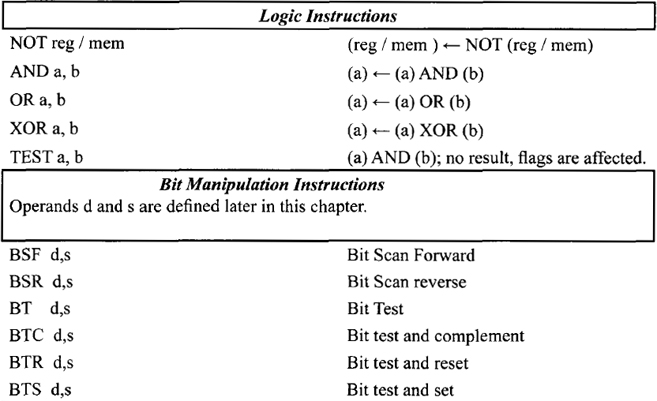11
ASSEMBLY LANGUAGE PROGRAMMING WITH THE PENTIUM: PART 2
In this chapter we provide the second part of the Pentium's instruction set. Topics include logic, bit manipulation, set on conditions, shift and rotate, unconditional transfers including subroutine calls/returns, conditional branch, iteration control, interrupt, and processor control instructions. Several assembly language programming examples using most of these instructions are provided. Finally, delay routines using Pentium's instructions are covered.
11.1 Logic, Bit Manipulation, Set on condition, Shift, and Rotate Instructions
The logic, bit manipulation, set on condition, shift, and rotate instructions of the Pentium are listed in Table 11.1. Let us explain some of the instructions in the table.
- The NOT mem/reg instruction finds the one's complement of the operand. That is, this instruction converts all 0's to l's, and vice versa. No flags are affected. The operand mem/reg can be 8-, 16-, or 32-bit. Typical examples include NOT BL, NOT AX, NOT EDX, and NOT DWORD PTR [EBX]. As an example, consider NOT BL. If prior to execution of this instruction, the contents of BL = 2AH = 0010 10102, then after execution of NOT BL, the contents of BL = 1101 01012 = D5H.
TABLE 11.1 Pentium Logic, Bit Manipulation, Set on condition, Shift and Rotate Instructions

- AND a, b performs bit-by-bit logical AND operation between the two operands ...
Get Microprocessor Theory and Applications with 68000/68020 and Pentium now with the O’Reilly learning platform.
O’Reilly members experience books, live events, courses curated by job role, and more from O’Reilly and nearly 200 top publishers.

